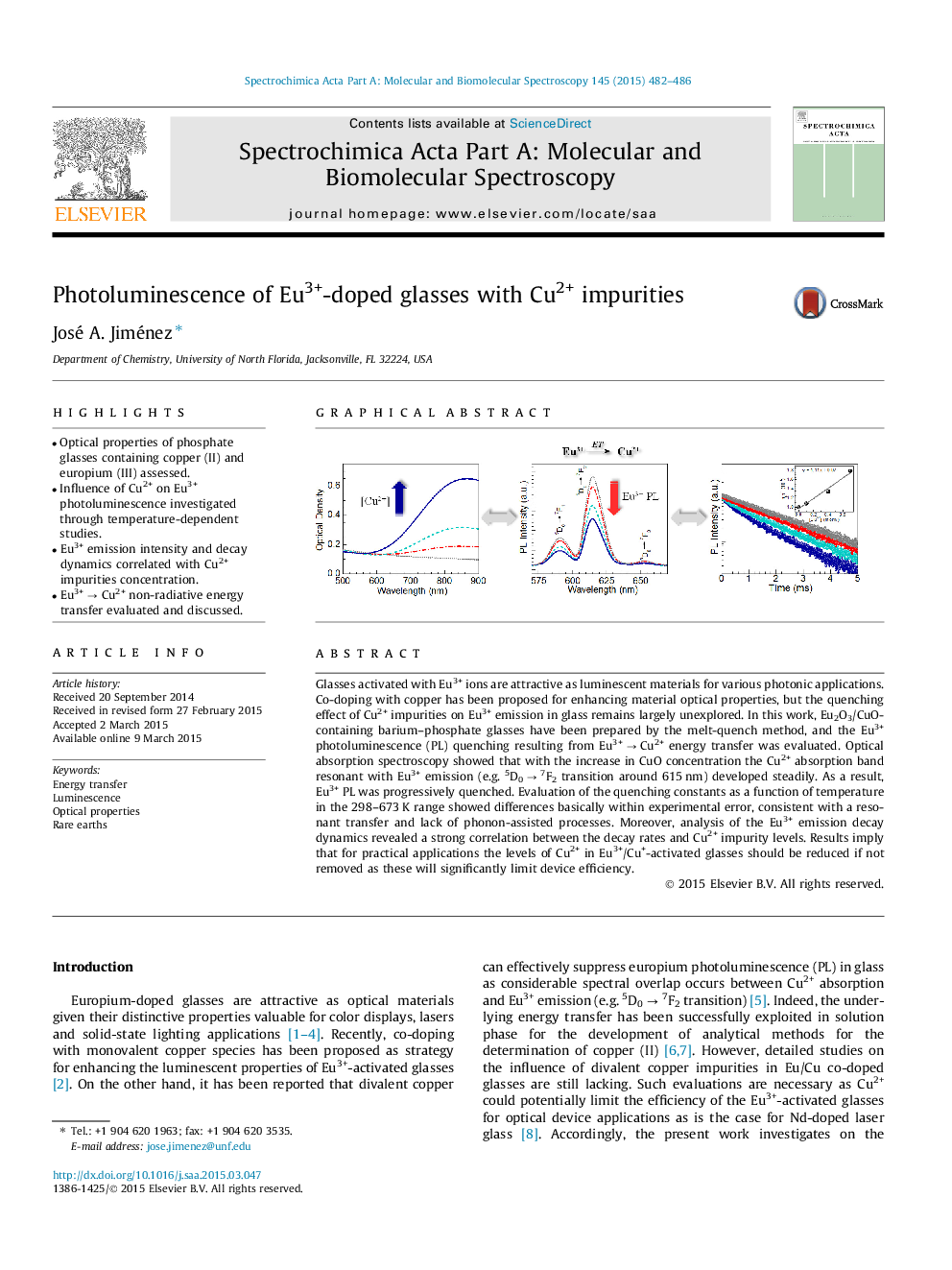| Article ID | Journal | Published Year | Pages | File Type |
|---|---|---|---|---|
| 1229009 | Spectrochimica Acta Part A: Molecular and Biomolecular Spectroscopy | 2015 | 5 Pages |
•Optical properties of phosphate glasses containing copper (II) and europium (III) assessed.•Influence of Cu2+ on Eu3+ photoluminescence investigated through temperature-dependent studies.•Eu3+ emission intensity and decay dynamics correlated with Cu2+ impurities concentration.•Eu3+ → Cu2+ non-radiative energy transfer evaluated and discussed.
Glasses activated with Eu3+ ions are attractive as luminescent materials for various photonic applications. Co-doping with copper has been proposed for enhancing material optical properties, but the quenching effect of Cu2+ impurities on Eu3+ emission in glass remains largely unexplored. In this work, Eu2O3/CuO-containing barium–phosphate glasses have been prepared by the melt-quench method, and the Eu3+ photoluminescence (PL) quenching resulting from Eu3+ → Cu2+ energy transfer was evaluated. Optical absorption spectroscopy showed that with the increase in CuO concentration the Cu2+ absorption band resonant with Eu3+ emission (e.g. 5D0 → 7F2 transition around 615 nm) developed steadily. As a result, Eu3+ PL was progressively quenched. Evaluation of the quenching constants as a function of temperature in the 298–673 K range showed differences basically within experimental error, consistent with a resonant transfer and lack of phonon-assisted processes. Moreover, analysis of the Eu3+ emission decay dynamics revealed a strong correlation between the decay rates and Cu2+ impurity levels. Results imply that for practical applications the levels of Cu2+ in Eu3+/Cu+-activated glasses should be reduced if not removed as these will significantly limit device efficiency.
Graphical abstractFigure optionsDownload full-size imageDownload as PowerPoint slide
